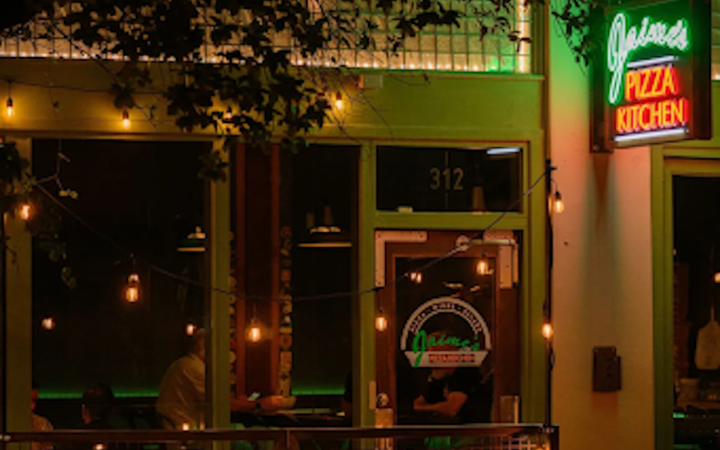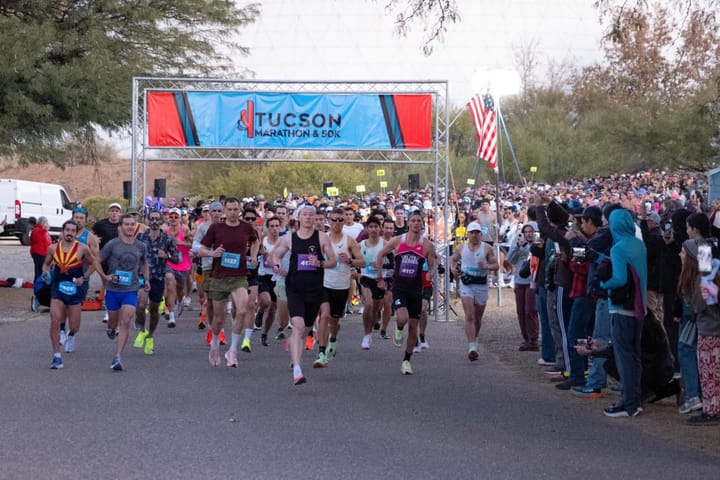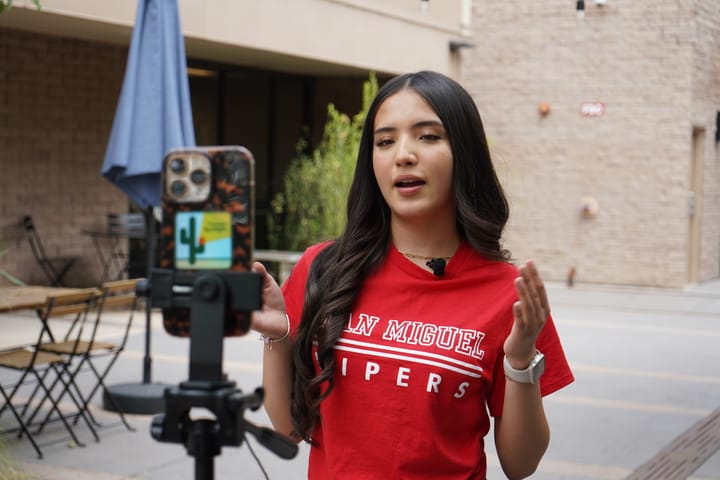Rising heat, rising voices in Tucson’s week of protest
Thousands of Tucson residents braved triple-digit heat to join a series of protests against the Trump administration’s policies targeting immigrants, workers, and civil rights.
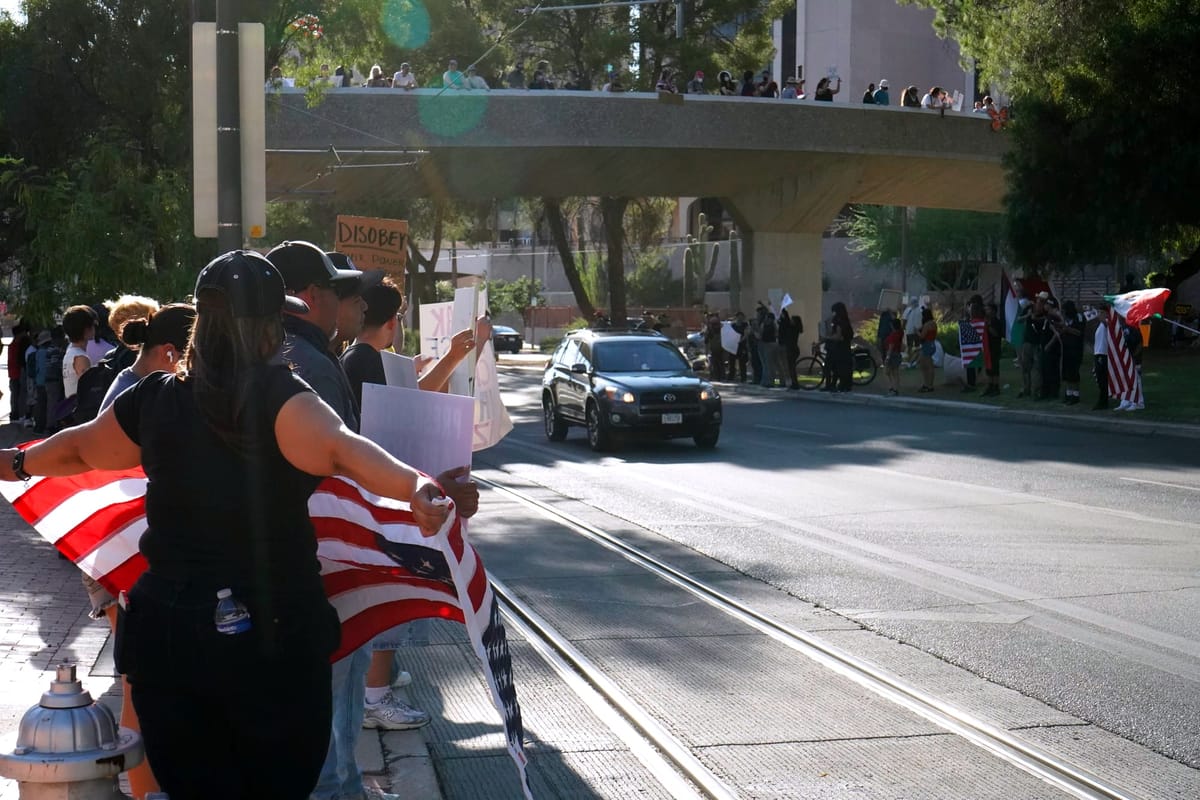
Getting people out into Tucson’s triple-digit heat is no small feat, but rising temperatures aren’t stopping a growing tide of demonstrators protesting the Trump administration’s attacks on immigrants, workers, civil rights and core democratic principles.
Thousands of Tucsonans participated in protests last Tuesday, Wednesday, Friday and Saturday, with attendees including retirees, children, teenagers, parents, immigrants, veterans, union workers and even dogs.
“People are right to be concerned that democratic norms are being eroded,” said Paul Schuler, associate director of the University of Arizona’s School of Government and Public Policy. “What these protests do is they help show the people that there are other people that feel the same way that they do. It can embolden people to make sure that they don't, preemptively capitulate to the regime or obey in advance.”
In the first 100 days of his presidency, Donald Trump signed 143 executive orders, including declaring a national emergency at the southern border, ending the CBP One app, expediting removal processes, altering the definition of birthright citizenship and more.
Trump also implemented the Department of Government Efficiency, which slashed federal programs, fired federal workers across the nation and gutted federal programs, especially those related to diversity, equity and inclusion.
Tucson’s protests joined thousands of others across the country, uniting local voices into a powerful nationwide movement against the Trump administration’s policies. While most demonstrations remained peaceful, some ended with arrests and the use of force by law enforcement.
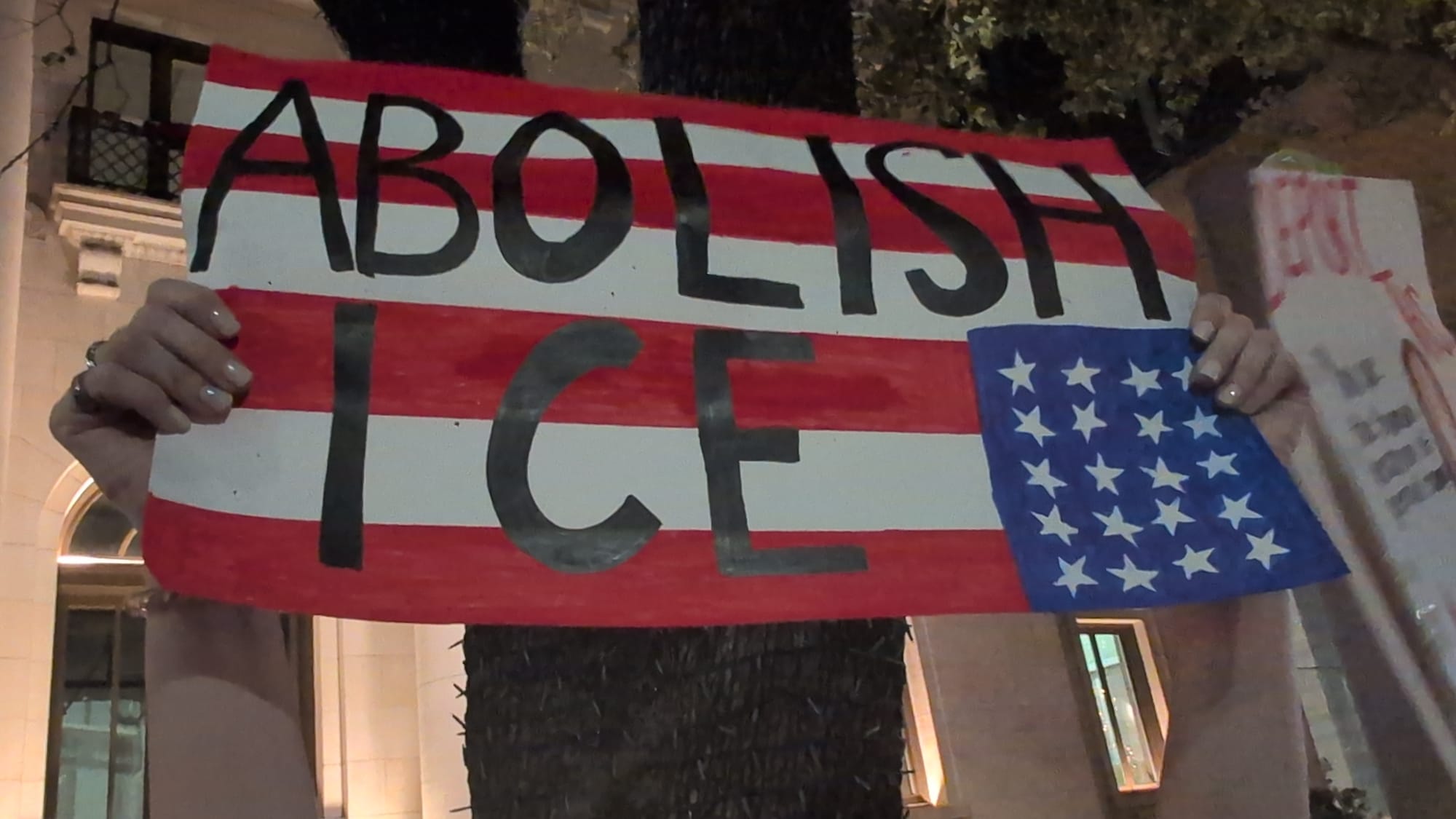
In Austin, Texas, 13 people were arrested Monday, June 9, during a mostly peaceful downtown march protesting the rise in immigrant detentions nationwide — an event one of Tucson Spotlight’s reporters came across while passing through town.
The demonstration dispersed after law enforcement fired tear gas at a section of the crowd that refused to disperse.
"This issue is so much bigger than us as individuals. It's about us and our rights and not being seen as people just because of where you come from," said one protestor who asked to remain anonymous. "Where you're from, what your papers say, it doesn't really matter at the end of the day. People are people."
An anti-ICE protest in Tucson on Wednesday, June 11, ended with three arrests and security guards using mace to disperse the crowd.
Tucson Spotlight hit the streets to ask community members what brought them out to protest during demonstrations held throughout the week.
Community voices in action
Hundreds of peaceful demonstrators filled the Garcés Footbridge and Veinte de Agosto Park in the heart of downtown Tucson on Tuesday, June 10, lining the sidewalks with signs as cars passed by, many honking their horns in solidarity. Families sat on the grass, listening to music and waving American and Mexican flags.
Attendee Guadalupe Guerrero, nicknamed “Mama Guerrera” for years of community activism, carried a Mexican flag on her shoulder in quiet defiance. Her son, an American citizen, was shot three times in the back by ICE more than 10 years ago.
“He was my son, my little boy,” Guerrero said. “He was – he is – my pillar, because he will never be forgotten. I wish he could see me still fighting for his rights.”
In 2011, her son Carlos LaMadrid, then 19, was fleeing federal agents who suspected him of transporting marijuana. While climbing a ladder over the U.S.-Mexico border fence, unarmed and with his back turned to officers, he was shot. He was taken to a hospital in Douglas but later died.
While a judge found the shooting justified several years later, Guerrero has never stopped believing that her son’s death was unjust.
Her activism is shaped by her binational perspective, having grown up in Agua Prieta, a border town neighboring Douglas.
“My Mexican friends, we are in the struggle because we want justice,” Guerrero said. “We don’t just want justice, we want something that is constitutional. The government that we have is failing us.”
A few feet away from Guerrero stood Matthew, 16, and Chris, 17, using their skateboards as makeshift protest signs. They yelled to the cars passing by and lifted their skateboards above their heads.
“They're breaking up families and that's just not right. That's just not okay,” Matthew said.
Both teenagers said they felt it was important for them to show up.
“I think we should care a lot more about people,” Chris said. “People try acting all cool by not caring. You think it's cool, but people die. We don't need to sit by and just watch this happen. You have a voice, speak up and use it.”
The UA’s Schuler said protests continue to be a vital means of preventing the rise of a dictatorship.
“If you're not paying attention to them when they happen, it is possible for things to get worse,” he said.
Tensions at ICE office protest
A “Melt ICE” protest outside the ICE office on Tucson’s south side on Wednesday, June 12 began peacefully but ended with three arrests and vandalism. Demonstrators and five security guards confronted each other outside the building, with protestors throwing paint-filled water balloons and security guards responding with mace.
Protesters pushed back security guards and withdrew when the guards unloaded a rubber bullet gun from a vehicle, but not before spray-painting and throwing rocks at the ICE building’s windows and vandalizing a nearby business.
Nearby business owners reported that employees at the ICE office were sent home by noon because of the protest.
After retreating, protesters encountered about 30 police officers. The standoff lasted nearly an hour before the crowd moved to the street corner at Valencia and Country Club, where police cars blocked north-south traffic as nearly 200 demonstrators took over the streets.
A woman known as Chaparra—which translates to "Shorty" in English—attended the protest with her four children, ages 15, 10, 8 and 1. The group also had a puppy in tow.
Chaparra said she’d told them to stay home, but they refused.
"We're originally from here,” she said with a shrug. “I don't know why (racists are) here. If they don't want to see Mexicans, then they should go somewhere else, like where their ancestors lived."
The family posted up on the northeast corner of the intersection, chanting and waving an anti-ICE protest sign. For Chaparra, protesting is a way to teach her children not to tolerate bullying and to speak up when they witness it, so they understand the power of their voices. She believes the Trump administration is targeting the Mexican community with intimidation.
“Why so much hatred against Mexicans?” she asked.
After sunset, police formed a line and pushed protesters away from the intersection. The three people arrested included a man who was shoved to the ground by multiple officers, a woman who remained seated despite police orders to move, and a man who stepped into stopped traffic while leaving the protest, according to several bystanders.
“She (was) just running her mouth, which is not against the law,” said Elizabeth Romero, a protester who observed the woman’s arrest. “It’s our constitutional right.”
Protests continue as temperatures climb
A peaceful protest outside the Tucson Federal Building on Friday, June 13 attracted nearly 100 people, including Margaret Soland, who chanted energetically as cars honked in support.
Soland is a union worker with IATS Local 415, which represents event production workers in the entertainment industry, and she recalled how Trump’s presidency impacted her field during his first term.
“We were the first ones out of work and the last ones to go back to work,” she said. “He’s going against unions, his whole trying to get rid of collective bargaining agreements? Just, no.”
In May, the Trump administration ended collective bargaining for roughly 1 million federal employees, who lost the right to come together, advocate and negotiate better pay and working conditions for themselves.
Soland also reprimanded the Trump administration for their attacks on the immigrant and transgender community.
“If you voted for him then you voted for his racist, sexist ideology, that's what you wanted in office and you got it,” she said. “And now it's affecting…even the people that voted for him in a negative way. It's sad.”
The week of demonstrations culminated on Saturday, June 14, during a nationwide “No Kings” protest that drew thousands of people from Tucson, Oro Valley, Vail and other surrounding communities. Over 2,000 protests were registered nationwide as part of the movement.
The demonstrations took place alongside Trump’s military parade—the first in decades—held to mark the military’s 250th anniversary. The parade, whether by coincidence or design, occurred on Trump’s birthday.
“I’m standing up for democracy because the Trump administration and the complicit Republicans are not following the rule of law, they’re not following the Constitution, and it seems like anytime they just want to do what they want to do,” said 67-year-old protester Dale DeNuzio. “They’re not respectful of the separation of powers, and I think it’s really important that people understand, we’re democracy-loving people, and if they are treating some people poorly, that shows they’re not respecting democracy.”
Saturday’s peak temperature reached 108 degrees, but thousands of people still showed up for Tucson’s events, which included an early morning event at Reid Park followed by a motor march later in the day.
“The heat doesn’t feel as hot. It feels worse to be doing nothing at home and not responding to the injustices that are happening,” said protester Patty Varela. “It’s better to be here, and it’s better to be here, if it’s raining, if it’s snowing, if it’s cold, if it’s hot. It’s better to be here and doing something about it.”
Susan Barnett, Sarah Arellano and Katherine Martinez contributed to this story.
Tucson Spotlight is a community-based newsroom that provides paid opportunities for students and rising journalists in Southern Arizona. Please support our work with a paid subscription.

